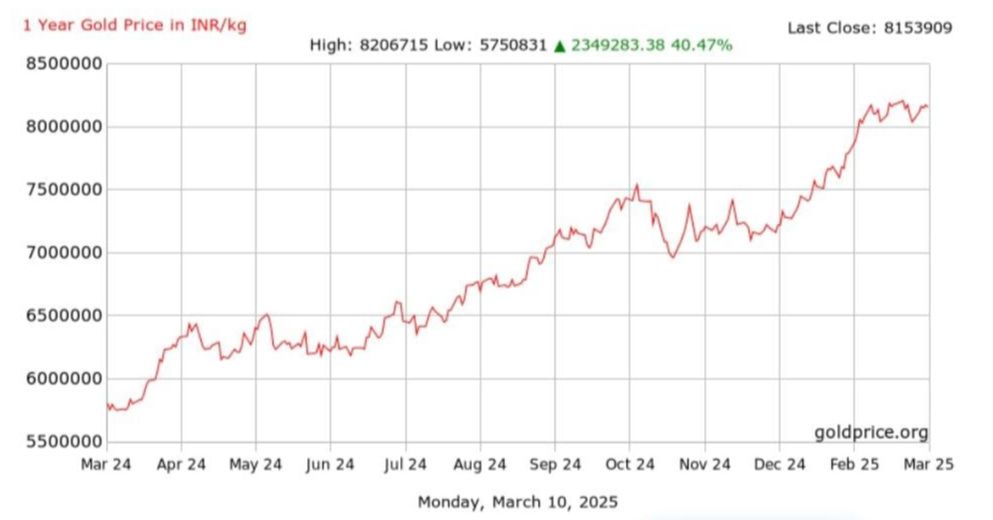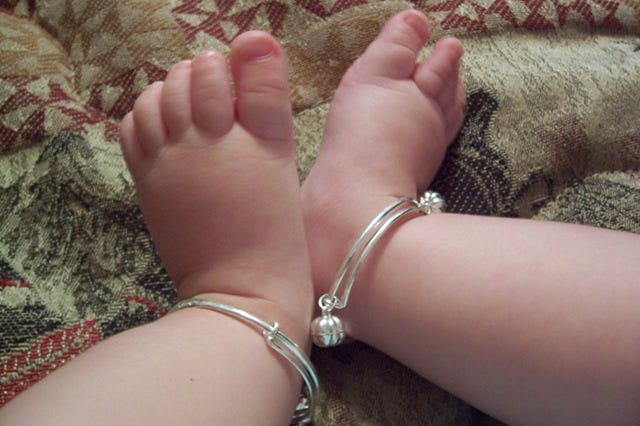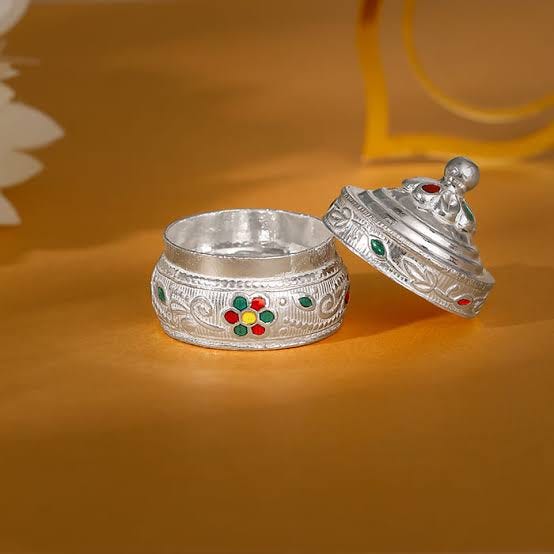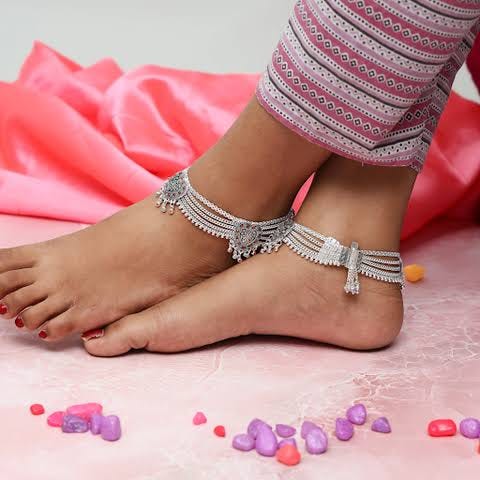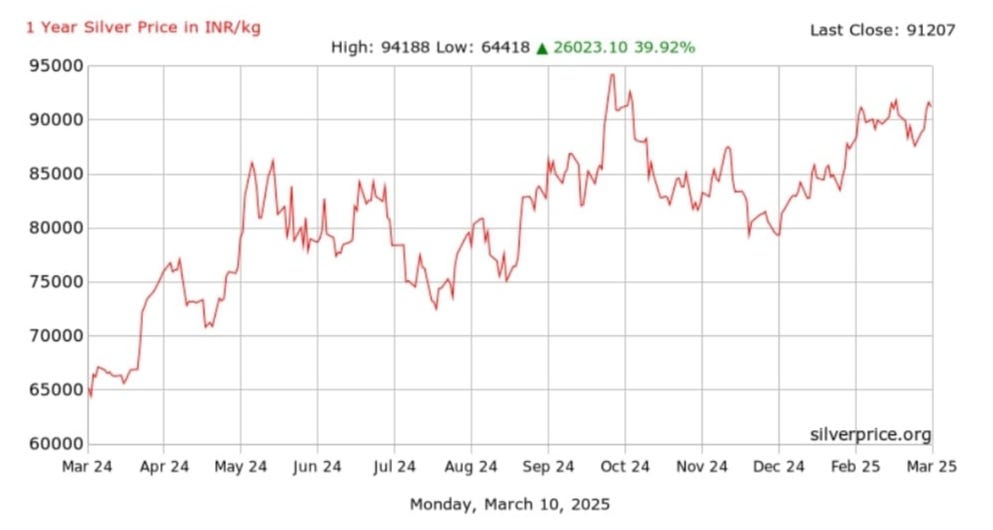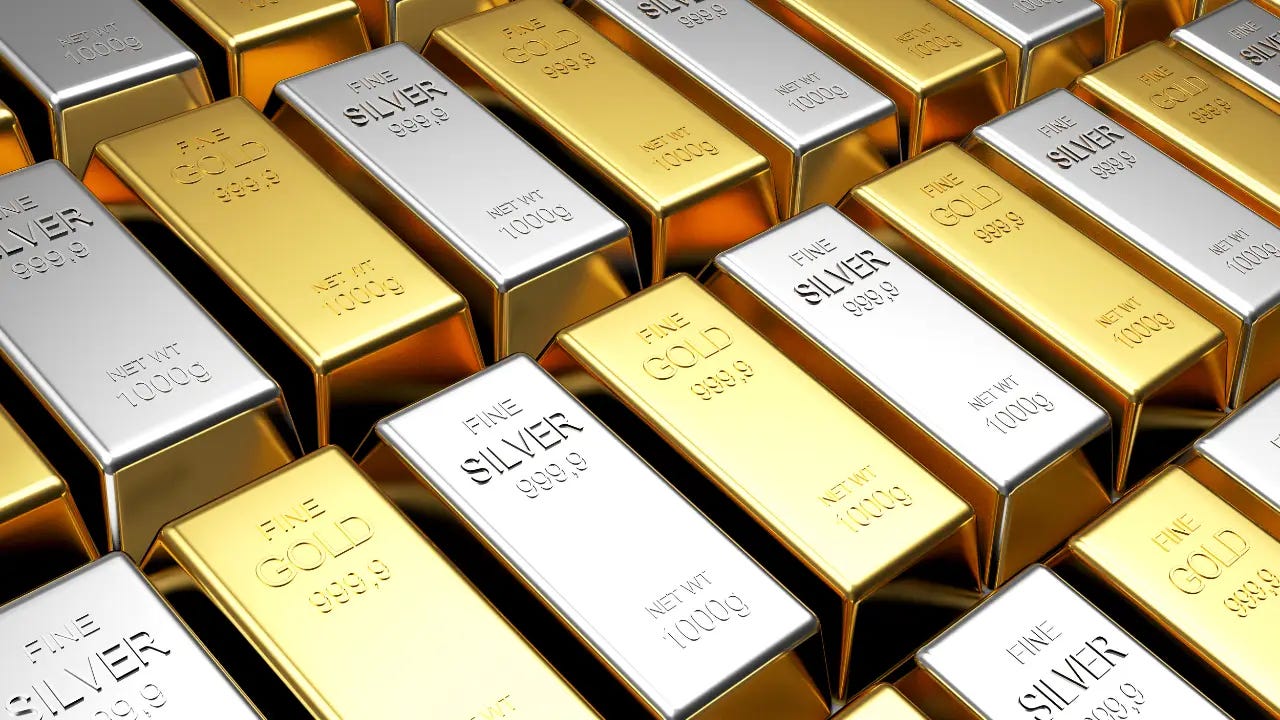Gold, Silver..Ah, the great duo of Indian family emotions!
Gold is the king of tradition, and silver is the humble yet ever-present sibling.
At the end of the day, these metals aren’t just about wealth—they're about tradition, nostalgia, and ghar ke maha-yudh (great family wars) over wedding jewelry!
So brace yourself as we deep dive into knowing more about the Chuddy-Buddies!!
1. Gold:
The ultimate symbol of prosperity, status, and “log kya kahenge” (what will people say).
Every wedding, every festival, and every major life event comes with a side order of gold. It’s the daughter’s inheritance, the mother’s pride, and the father’s silent sigh as he checks the skyrocketing gold prices.
“Beta, wear this gold chain at the wedding, let them know we’re doing well!” And let’s not forget the great Indian aunties who can assess family wealth faster than a bank, just by looking at your jewelry!
So let's start with the evolution of the “ultimate metal of this status driven society”
1.1 A Brief timeline of gold history
A Brief Timeline of Gold's History
3600 BC: Gold is first smelted in ancient Egypt.
2600 BC: Egyptian hieroglyphs call gold "more plentiful than dirt"; first gold jewelry appears.
1223 BC: Tutankhamun’s funeral mask is crafted from gold.
600 BC: Lydia (Asia Minor) strikes the first gold coins.
560 BC: Lydians refine gold and silver, creating the first bi-metallic coinage.
546 BC: Persians capture Lydia and adopt gold for coinage.
500 AD: Ancient China circulates gold square coins (Ying Yuan).
1300: London establishes hallmarking at Goldsmith’s Hall.
1370-1420: The Great Bullion Famine depletes European gold mines.
1489: England mints its first gold Sovereign coin.
1717: The UK sets the Gold Standard, linking currency to gold.
1848: The California Gold Rush begins.
1870-1900: Most countries, except China, adopt the Gold Standard.
1914: WWI leads to a temporary abandonment of the Gold Standard.
1944: The Bretton Woods Agreement establishes fixed exchange rates, with the U.S. dollar linked to gold.
1971-73: U.S. President Nixon ends the Gold Standard, allowing currencies to float.
1999: European banks cap gold sales, reaffirming its role in monetary reserves.
2010: World Bank president suggests returning to the Gold Standard.
2014: The Royal Mint launches a gold bullion trading platform.
2015: Royal Mint reintroduces branded gold bars and launches Digital Gold investments.
2020: The Royal Mint introduces a physically-backed gold exchange-traded commodity (RMAU).
(Source - Royal Mint)
1.2 The Cosmic and Geological Origins of Gold
Gold has had quite the journey—literally from outer space to your grandmother’s jewelry box! Scientists believe it was born in supernova explosions and neutron star collisions, which means your gold chain could have started its life in a cosmic firework way before Earth even existed. Talk about ancestral property!
Now, when Earth was a molten mess, most of the gold sank straight to the core—probably why we have so many emotional breakdowns over lost jewelry. The gold we do have near the surface? That likely arrived via asteroid impacts during the Late Heavy Bombardment (4 billion years ago), which sounds like a fancy way of saying, “Gold literally rained down on us!”
One of the richest gold deposits on Earth—the Witwatersrand Basin in South Africa—was actually exposed by a meteor impact 2 billion years ago. Fast forward to 1886, and humans being humans, saw all that shiny stuff and started digging like there was no tomorrow.
And if you thought gold was done traveling, think again! Some of it resurfaced from deep within the mantle, popping up in places like Argentina’s Deseado Massif—because even after billions of years, gold still knows how to make a grand re-entrance.
1.3 Gold in Indian Households: The Shiny "Fixed Deposit"
Gold isn’t just a metal in India; it’s an emotion, a family heirloom, a status symbol, and an emergency fund wrapped in one glittering package. While the West invests in stocks and bonds, Indian households proudly hoard gold like a squirrel hoarding nuts for winter—except our winter is usually a wedding, a festival, or an unexpected financial crisis.
Gold Hoarding: A National Obsession
Indian households own about 25,000-27,000 tonnes of gold, worth over $1.5 trillion—that’s more than the GDP of some countries!
65% of Indian gold demand is for jewelry (read: mandatory wedding purchases), while the rest is in coins, bars, and investments.
Rural India contributes 60-65% of total demand, treating gold as the ultimate "zero-risk" asset, unlike stock markets that can give heart attacks.
Why Indians Love Gold More Than Mutual Funds
"Emergency Fund" That Shines → Forget liquid funds; need cash? Just pledge some gold and get a loan instantly!
No Market Volatility → Unlike stocks, gold doesn’t give you panic attacks at 9:15 AM on a Monday.
Inflation Hedge → While the rupee shrinks, gold usually rises. Grandmothers were right all along!
Social Status → More gold = more respect at weddings. No arguments there.
Tax-Free Magic → Unlike other assets, gold jewelry passed down generations is tax-efficient inheritance planning.
Investment in Gold: Old vs. New Ways
Traditional: Physical gold (jewelry, coins, bars) → Comes with storage costs and occasional "missing" gold from family cupboards.
Modern: Digital gold, Gold ETFs, Sovereign Gold Bonds → For those who don’t want to wrestle with bank lockers.
1.4 The Monetary Use of Gold Throughout History
Gold has been a cornerstone of monetary systems for thousands of years, valued for its scarcity, durability, and intrinsic worth. Here’s how its role has evolved over time:
1. Early Use as Currency (Before 600 BC)
Gold was first used for barter and ornamentation in ancient Egypt (~3000 BC).
By 600 BC, the kingdom of Lydia (modern Turkey) minted the first gold coins, setting the stage for gold-backed trade.
2. Classical and Medieval Gold Coins (600 BC - 1500 AD)
The Persians (546 BC) adopted gold coinage, influencing trade across Asia.
The Romans (1st century AD) introduced the aureus, a widely accepted gold coin.
The Byzantines (4th-15th century AD) issued the solidus, a stable gold currency that lasted for centuries.
The Islamic dinar and European florin and ducat (13th-15th century) were widely used in medieval trade.
3. The Gold Standard (1700s - 20th Century)
In 1717, Britain set a fixed gold price, laying the foundation for the Gold Standard.
By the 19th century, most major economies linked their currencies to gold, ensuring stable exchange rates.
The Gold Standard fueled global trade and economic stability but limited monetary expansion.
4. Abandonment of the Gold Standard (20th Century)
World War I (1914-1918) led to countries suspending gold convertibility to finance war efforts.
After World War II (1944), the Bretton Woods system pegged global currencies to the U.S. dollar, which was backed by gold.
In 1971, U.S. President Richard Nixon ended the gold backing of the dollar, leading to modern fiat currencies.
1.5 Gold prices over the Year
Gold prices have significantly increased over the past time which shows the credibility and trust of peoples in the commodity.
2. Silver:
The quieter but equally sentimental sibling. It’s the first gift a baby gets…
Tiny silver anklets that jingle with every step, and a silver spoon to ensure the child grows up “strong and smart.” It’s in our puja thalis, our decorative diyas, and that mysterious silver coin every grandmother has been handing down for generations.
And of course, it’s also the one metal that gets used guilt-free—because unlike gold, silver is for “daily use,” which means it keeps disappearing into various corners of the house!
2.1 A Brief Timeline of Silver's History
3000 BC – Early silver extraction begins in Anatolia (modern-day Turkey).
2500 BC – The Chaldeans develop the cupellation process to extract silver from lead-silver ores.
600-300 BC – The Laurium mines in Greece produce about 1 million troy ounces of silver annually, fueling trade and economic growth.
100 BC - 400 AD – The Roman Empire exploits Spanish silver mines, making silver a crucial part of Roman currency and trade.
750-1200 AD – The discovery of silver mines in Central Europe (Germany, Austria, Hungary) leads to increased European silver production.
1492 – The discovery of the Americas introduces vast silver deposits, transforming global trade.
1500-1800 – The Potosí silver mines in Bolivia produce over 1 billion troy ounces, making Spain the wealthiest European empire.
1700s – Technological advancements improve silver refining, increasing industrial and economic applications.
1870s – The Comstock Lode in Nevada becomes one of the richest silver strikes in U.S. history.
1873 – The U.S. Coinage Act of 1873 (the "Crime of 1873") ends the free coining of silver, shifting the economy toward the gold standard.
1900s – Silver finds increased use in photography, industrial applications, and currency.
1960s – Many countries phase out silver coinage due to rising silver prices.
1980 – Silver reaches a record high of nearly $50 per ounce due to market speculation by the Hunt brothers.
2000s-Present – Silver remains a key asset for investors and industries, with growing demand in electronics, renewable energy (solar panels), and medicine.
2.2 Silver in Indian Culture: A Precious Metal of Tradition, Wealth, and Utility
Silver has been deeply embedded in Indian culture for centuries, valued not just as a precious metal but as a symbol of prosperity, purity, and heritage.
Unlike gold, which is often hoarded as a long-term asset, silver is more versatile, finding extensive use in savings, investments, gifting, and various traditional and everyday applications.
1. Silver as a Form of Savings and Investment
Traditional Wealth Preservation: In Indian households, silver has been considered a reliable store of value. Historically, families would buy silver coins, utensils, and jewelry as a hedge against inflation and economic uncertainties.
Silver Bullion and Coins: Investing in silver bars and coins has remained a popular choice, especially among middle-income families who view it as a more affordable alternative to gold.
Silver ETFs and Digital Silver: In modern times, digital investment options like silver exchange-traded funds (ETFs) and silver-backed investment products have gained traction, making it easier for investors to hold silver without physical storage concerns.
2. Silver in Gifting Traditions
Weddings and Festive Occasions:
Silver jewelry, coins, and utensils are commonly gifted in Indian weddings as a token of blessings and prosperity.
During auspicious ceremonies like engagements, it is customary to gift silver betel leaf sets, kumkumboxes, or silver idols of deities.
Festivals and Religious Offerings:
During Diwali, silver coins with images of Goddess Lakshmi and Lord Ganesha are bought and exchanged as symbols of wealth and fortune.
Dhanteras, the first day of Diwali, is considered an auspicious time to purchase silver.
Silver items are also gifted during Annaprashan (baby’s first rice-eating ceremony), housewarming, and other milestones.
3. Silver in Temples and Religious Practices
Many Hindu temples are adorned with silver doors, ornaments, and idols.
Devotees often donate silver coins, utensils, or ornaments to temples as an act of faith and devotion.
Rituals like Chhath Puja in Bihar involve silver utensils for offerings, emphasizing its sacred role.
4. Silver in Everyday Use
Silver Utensils: In many traditional households, drinking water from silver cups or eating from silver plates is believed to have health benefits due to silver’s antibacterial properties.
Silver Jewelry: Women and children wear silver anklets and toe rings, not just as ornaments but for their supposed health and spiritual benefits.
Ayurvedic and Medicinal Uses: Silver has been used in Ayurveda for its antibacterial properties. Silver foil (varak) is used in sweets like kaju katli and paan, believed to aid digestion.
5. Silver in Modern Times
With rising silver prices, its investment appeal has grown significantly.
Silver is also seeing increased use in industrial applications like solar energy, electronics, and medicine, making it a dual-purpose asset—both traditional and futuristic.
2.3 The Silver standard
The silver standard is a monetary system in which the standard economic unit of account is a fixed weight of silver. Silver was far more widespread than gold as the monetary standard worldwide, from the Sumerians c. 3000 BC until 1873. Following the discovery in the 16th century of large deposits of silver at the Cerro Rico in Potosí, Bolivia, an international silver standard came into existence in conjunction with the Spanish pieces of eight. These silver dollar coins played the role of an international trading currency for nearly four hundred years.
The move away from the silver to the gold standard began in the 18th century when Great Britain set the gold guinea’s price in silver higher than international prices on the recommendation of Sir Isaac Newton, attracting gold and putting them on a de facto gold standard. Great Britain formalised the gold standard in 1821 and introduced it to its colonies afterwards. Imperial Germany’s move to the gold standard in 1873 triggered the same move to the rest of Europe and the world for the next 35 years, leaving only China (and, until 1930, the French Indochinese piastre) on the silver standard. By 1935 China and the rest of the world abandoned the silver and gold standards, respectively, in favour of government fiat currencies pegged to the pound sterling or the U.S. dollar.
(Source - wikipedia)
2.4 India’s Love for Silver: A Shiny Obsession
India is one of the largest consumers of silver, importing around 6,000-9,000 tonnes annually.
Unlike gold, silver is both an investment and a utility metal—used in jewelry, utensils, and now even technology (hello, solar panels and EVs!).
While rural India prefers silver for savings, urban investors are waking up to its potential as an asset class.
2.5 Why Indians Hoard Silver (Besides Making Fancy Cutlery)
Affordable Alternative to Gold → When gold prices shoot up, Indians turn to silver for their “shagun” needs and investment backup.
Industrial Demand = Price Appreciation → Used in electronics, solar panels, and batteries, silver has real-world demand backing its value.
Inflation Hedge on a Budget → It may not be gold, but silver still holds value better than cash under the mattress.
Cultural & Religious Significance → Silver idols, coins, and jewelry are must-haves for festivals and traditions. (Ever seen a pooja plate made of mutual funds? Exactly.)
Liquidity & Easy Access → No demat accounts needed—just visit your neighborhood jeweler, and you're good to go!
2.6 Silver Prices Over the Year
Silver shown high fluctuations as people are showing lesser interest in the commodity.
Conclusion: Gold & Silver – Har Ghar Ki Kahani
For Indian families, gold and silver are not just metals; they are emotions. Gold is the ultimate "izzat ka sawaal" at weddings, while silver quietly does all the hard work—be it in pooja thalis, payals, ya phir investment portfolio.
Financial Safety Net: When markets crash, sone ka biscuit hamesha kaam aata hai.
Cultural & Social Prestige: Be it shaadi ka set ya Diwali ka chandi ka sikka, these metals are status symbols in every home.
Timeless Investment: Stocks aur mutual funds fluctuate, but dadi ka sona hamesha safe hai.
And let’s be real—koi bhi Indian kabhi nahi kehta, "Bas ab aur sona ya chandi ki zaroorat nahi hai". Kyunki chahe wedding ho, festival ho, ya bas ek accha mahurat, the question is always the same: “Aur thoda le lein kya?” 😆
Thank you for reading till the end! We hope you enjoyed this report.
Researched By- Naresh, Mayank and Vaibhav
If you like the hard work we put in, you can invest in us:
For our Non-Indian audience: You can donate to us through PayPal. Click here.
For our Indian audience, UPI QRs are given below:









